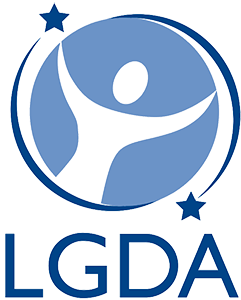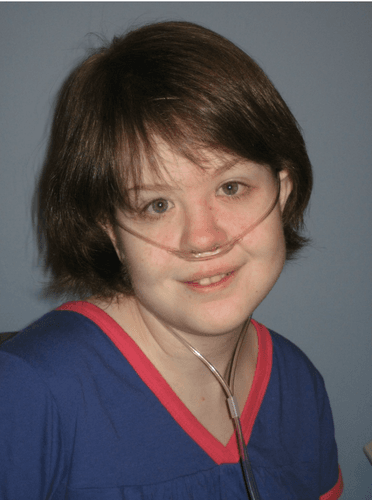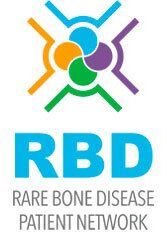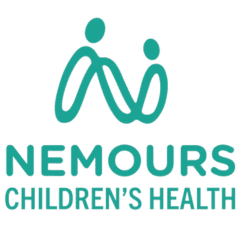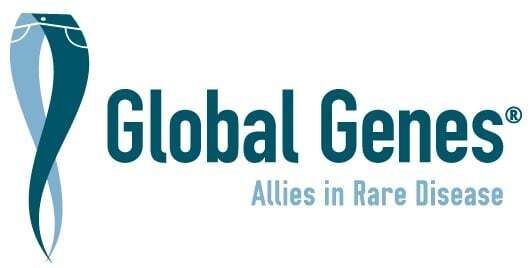Brittany was diagnosed with diffuse pulmonary and systemic lymphangiomatosis in January of 2007. She was 16 years old. At that time she had been having ever more serious health issues for some 18 months. There had been issues off and on all of her life, but nothing that portended the illnesses that finally showed themselves in the fall of 2005.
In the spring of 2006 Brittany was diagnosed with seizure disorder, a neurovascular condition called Moyamoya, and a moderate-sized pericardial effusion, following several months of progressively worse symptoms and testing. The seizures were quickly controlled with medication. The pericardial effusion remained stable all summer. But the Moyamoya caused TIA’s (Transient Ischemic Attacks) that resulted in serious neurological problems, so we made the decision to take her to Texas Children’s Hospital in Houston for surgery.
The surgery was scheduled for the Friday after Labor Day 2006. The pericardial effusion was an issue still. It had not changed, but there still was no explanation for its presence. I was concerned about the increased risk of anesthesia and so was the anesthesiologist. She insisted that someone from the cardiology service at TCH evaluate Brittany before the surgery proceeded.
So they came, they saw, they EKGed and echoed, and they offered opinions—lots of opinions. Finally it was decided to divert Brittany to the cath lab to have the effusion drained and reschedule the neurosurgery for Monday.
That evening the Interventional Cardiologist drained 350cc of fluid (about 1 ½ cups) from around Brittany’s heart. An echo the next morning showed the fluid had returned and the effusion was larger than before it was drained. It would take several days and surgery to place two chest tubes to make the diagnosis of chylopericardium. They drained 500cc of fluid during the surgery then it continued to drain for several days after. When it stopped draining an echo revealed that the tubes were clogged and the fluid was accumulating around her heart again. The surgeon tried to clear the tubes, but ended up pulling them out.
No one could figure out what had caused Brittany’s pericardial effusion to develop and a CT scan done during this admission revealed a small left-sided pleural effusion that had not been recognized previously, further confounding the issue. After 18 days we did not know much more than when we arrived, but it was clear that Brittany’s neurological status was getting worse and she needed to have the neurosurgery for her moyamoya. It was risky, but there were no other options.
The neurosurgery was done October 18, 2006, and went very well. Brittany recovered a great deal of her neurologic function within the first couple of weeks. She was discharged home to recover from the brain surgery and her local cardiologist would monitor her with bi-weekly echos. She returned to school half days, but had trouble catching up because the fatigue was so severe. We had dropped her elective classes to focus on English, math and science for the semester since she had been in the hospital so long, but it didn’t help much. And it was becoming obvious that she would not be physically able to return to school full time that year.
In November a chest x-ray report questioned cystic changes in Brittany’s lungs. She had no history of pulmonary disease so we took her immediately to a local pulmonologist for further evaluation. Pulmonary function testing and a CT scan of her lungs in December revealed evidence of significant Interstitial Lung Disease (ILD), though the doctor could not tell which type from the CT. By that time the effusion behind her heart had grown so large that it was clear the surgery to place a pericardial window would have to be done to prevent the fluid from causing her heart to fail. Our local pulmonologist requested the surgeon in Houston obtain lung tissue for biopsy during the procedure for definitive diagnosis.
On the first Friday in January 2007, Brittany was admitted to Texas Children’s Hospital for the 4th time in 5 months. She had a heart catheterization that day which was expected to be a routine evaluation, as her echos all showed normal function. But all was not normal. She came to the recovery room with stents in her pulmonary artery and aorta and a diagnosis of pulmonary hypertension.
The following Monday the pericardial window and lung biopsy were done. Afterward the surgeon explained to us what he had seen in Brittany’s chest during the surgery. He described numerous lymphatic vessels that were very large and engorged that he tied off, including the main thoracic duct. And he told us of lymphatic fluid coming from somewhere unseen in her chest that he could not stop. He cautioned that if it did not stop she might need more extensive surgery.
The biopsy diagnosed Brittany with diffuse pulmonary lymphangiomatosis and possibly involving the pericardium, as well. Other testing revealed evidence of lymphangiomatosis in her liver, spleen, and kidneys. There were no answers to our questions about treatment. The pulmonologist who had treated several cases was out of town. A hem-onc Fellow came to see us to talk about Interferon. There was no solid evidence Interferon worked for lymphangiomatosis, he told us, and gave me some printed information with the caution, “Once you read that you won’t want to give her this drug.” (He was right.) He was sorry, but he had nothing else to offer. On top of all that, echos done even before Brittany’s chest tube from surgery was out showed a wall had formed around one side of her heart and the fluid was reaccumulating there. The aggressiveness of the fluid and the inability to make it stop, in spite of almost no fat in her diet and all these surgeries, was quite discouraging.
She was in the hospital about 3 weeks that admission. Except for the fatigue, Brittany seemed to be doing pretty well the first few weeks after we got home from the hospital. She saw the cardiologist and pulmonologist every couple of weeks for echos and chest x-rays. We packaged her case and sent the records to Boston for review. We searched for answers. She caught up on her school work. But with each week that passed we saw decline. The effusion around the back side of her heart grew larger, and she developed a right sided pleural effusion that grew larger every week. Her fatigue worsened; her pain increased. She lost weight, lots of weight—and she was tiny to begin with, 5 feet tall and 100 pounds when all this began. By the first week of May 2007 the pleural effusion was so large and she was having so much trouble breathing that the pulmonologist recommended draining it. He took 1500cc off and the chest x-ray after the procedure did not look any different than before. She could breath easier, but that only lasted a day. A week later the procedure was repeated. Same results.
We arranged to see the pulmonologist at TCH who had been out of town when Brittany’s biopsy was done in January. There were some things we decided to explore and he arranged for Brittany to see an attending in hem-onc at TCH who had treated a few cases of lymphangiomatosis. Two more pleurocenteses had to be done in July, a return to TCH for her one year check-up with the neurosurgeon, then school began. She still was not able to go full days to school, but was determined to go as much as she could. Because of the size of the effusions and the fatigue the doctors did an overnight pulse ox study. Her O2 saturations dropped into the 80’s while she was sleeping, so she started sleeping with oxygen. After a 5th pleurocentesis in September and much discussion with the doctors at TCH and at home and seeing how much worse Brittany was getting, we decided to try the Interferon. We felt there was no choice but to try it. She got the first dose on November 1.
Interferon was rough on Brittany, to say the least. She suffered terrible side effects from it and many days was too sick to get out of bed. Often she would pull herself out of bed, determined to go to school, only to be so worn out by the time she got dressed that she would have to go back to bed. In late November we discovered she had gallstones. Back to Houston to remove the gallbladder. They drained her lung at the same time—2000cc. She healed from the surgery, but it took a toll on her lungs. Within a month of the surgery her O2 sats were so low she had to go on oxygen even while awake. She tried to keep going to school, but it was clear that lugging around oxygen and schoolbooks and rushing from class to class, even with help from friends, was too much for her. We would have to make the transition to home school. Some days she could plow through a week’s worth of assignments; others she couldn’t stay awake long enough to eat.
Through that spring Brittany had to have the fluid drained every couple of weeks, each time removing 1500 to 2000cc. Her weight was down to 78 pounds. The first weekend in April we had to take her to the ER twice. We returned to Houston the following week and remained there in the hospital 6 weeks, during which Brittany had surgery to place a Denver shunt from her chest to her abdomen, started on a BiPAP breathing machine at night, started medicine for thyroid when hers failed, had a PICC line placed, and started TPN for nutrition. We finally got to go home for a couple of months in the middle of May, but she continued to be anemic, was in pain every day, and a pleural effusion developed in the left side of her chest to go along with the one on the right, among other things.
We celebrated Brittany’s 18th birthday on July 29th. It was a good day. Because of her seizures and the recent TIAs she still could not get a license to drive, but I took her to get a picture ID and register to vote. Was she proud of that! We went back for check-ups the second week of August that ended with her being readmitted because she was so sick. We stopped the interferon as it obviously was not working and also stopped the very low fat diet, for the same reason. We spent 3 weeks in TCH that time—what Brittany called a tune-up.
Over the next few months things were relatively stable. The Denver shunt helped for a good while. And the BiPAP helped a lot, as well. The TPN improved Brittany’s nutritional status and she gained some weight and her energy improved some. But she wasn’t getting well. Her lungs were failing. We already knew she did not meet criteria for lung transplant because so many other organs were involved. Rapamycin (sirolimus) looked promising, but we could not travel to Cincinnati and the protocols were not yet ready for other centers to use. Eventually Brittany was put on the drug, but it didn’t work for her. We saw at least one of her local doctors each week, went to Houston a few times, and managed to keep her out of the hospital for nearly a year.
Pain was a huge issue, as was anxiety caused by her difficulty breathing, and the fatigue. A myriad of physical limitations that were frustrating for Brittany were compounded by the isolation and uncertainty that comes with a life-threatening, rare, and incurable disease. There were a couple of her girlfriends who kept in touch, but for the most part they drifted away, caught up in the activities and other things that define adolescence. She had a sweet boyfriend—a really good kid who was just crazy about her, and she him. They loved each other. They talked every day, he would take her out for pizza or a movie or an hour at the mall when she was up to it; sometimes he would come and watch TV with her. Keith was still in school—it was their senior year—and he took her to all the school events—homecoming, prom, and his graduation. She had dreams of marrying him someday and having a family. She wanted to go to college and become a social worker or counselor so she could help kids.
There were a couple of things that really hit home with me that Brittany knew she was not going to get well. The first was when she broke up with Keith. She told me she still hoped for the miracle cure and that he would “not find someone he loves more than me” in the meantime, but he had begun talking of not going to college out of state so he could stay closer to her and she wouldn’t have it. She said that if she let him stay here and she died, then he would not have either one of his dreams and would be left with nothing. So she broke up with him to force him to grab hold of the one dream that could come true. She went to the airport to see him off the day he left for Florida for college. It was a wonderful day. They laughed. They cried. It was the last time they would ever see each other.
We love the beach. Particularly Galveston Island. We had not been able to go since Brittany started needing oxygen, so the first week of August 2009 we rented a beach house with some friends. We were able to set up Britt’s oxygen and she could be on the beach without having to walk too far. It was a wonderful trip. Because we were right on the beach she was able to take some walks in the surf and sit out in the sun. I’ll always be glad we made that trip.
A couple of weeks before we left for that vacation, Brittany had a dream in which God spoke to her, telling her she would be healed. She was very excited and certain this was the answer to her prayers for a cure. But a couple of days later she asked me to sit with her and talk about it, saying she had been thinking about what God said and had realized He said she would be healed, not cured. “Healed can be the same as cured, but sometimes God heals us by taking us to Heaven.” One night on the island at dinner, she said to our friends, “I’m not afraid of dying anymore. I don’t want to, but I’m not afraid.” The next day she and I were walking along the shore and she squeezed my hand and said, “I don’t need to Make-A-Wish anymore. This is my wish.”
Brittany was apprehensive all summer about our return to Houston scheduled for mid-August. She was certain they would put her in the hospital. I reminded her that we had been in May and did not get admitted. The day before we left, as we were packing, I asked her if she wanted to pack a pair of sandals that were on the floor next to her bed. She looked at them and considered the question, saying, “No. I won’t need them.” At the time it seemed a rather benign response to a practical question. Later it would seem almost prophetic.
The trip to Houston was long, but generally uneventful. Brittany usually slept most of the way, but not this time. I thought maybe she was still anxious about seeing the doctors, but she said, no, she just couldn’t get comfortable. Then finally, just as we reached the city, she said to me, “You know, Momma, I think maybe I need a tune up.” I thought she was just preparing herself in case they wanted to admit her, but she was said not. She made the same remark as we were going to bed, and again on the way to the hospital the next morning. She had an echocardiogram that looked terrible. We were all concerned. She looked bad. After some discussion and Brittany confessing she was afraid to leave the hospital, she was admitted.
For the next 6 weeks we tried everything we could think of to help her get better. Nothing worked. We tried new drugs, she had a lymphangiogram and another chest surgery to tie off a large leaking lymphatic vessel; she needed transfusions, spent a week in ICU then back to the floor then bounced back to the step-down unit. The doctors had the discussion with her and Brittany made clear her wishes regarding intubation and other treatments. We revisited the transplant question. She did not meet criteria. The head of the lung transplant team had been one of Brittany’s doctors for a long time and I knew he would have put her on that list if he could have found a way. She was just too sick; too many systems involved. She made clear to the doctors and to us that when she died—whenever it might be—she wanted an autopsy done so that more could be learned about this disease and then to donate any viable tissues for transplant.
The family began to gather that last week. Brittany had some good hours and was able to communicate and even felt pretty good at times, but it was clear to us all that the end was at hand. On Thursday afternoon, she was moving her mouth and I thought she was talking in her sleep. When I touched her, she opened her eyes and I asked what she was dreaming about. “Not dreaming,” she said. “Playing putt-putt with Jesus and talking about Heaven and stuff.”
From the moment Brittany was born I thought hers an old soul. She would fix her gaze on me and it seemed those eyes held the answers to the universe. Make no mistake, she could be a real pill sometimes, but there was this goodness, a generosity of spirit in Brittany that was unmistakable. She tried not to let people see how bad she felt, and she was tough. She put up with a lot during her illness. It wasn’t until that week of that last hospital stay that she finally said, “I’m tired of doing stuff that makes me miserable and doesn’t help.”
As strong and hopeful as Brittany was during her illness, there were times when she was downright furious about the unfairness of it all. We all had those feelings from time to time. No one dealing with this kind of rare illness goes about always thinking positive thoughts. We may not admit it—usually because we know others can’t hear it—but the anger is there, along with fear and anxiety. Through it all we do our best to hold on to hope and our faith, even when it is tested most severely, often because that is all we have to hold on to.
My daughter was a blessing—and a challenge. She was loving, generous, sentimental, intuitive—and temperamental. She was smart and creative—and hardheaded and impulsive. She loved books and animals, TV, movies and music, flowers, shrimp, Mexican food, Jeff Dunham, and pizza; she loved the beach at Galveston. She wanted someday to be a mother to a red-haired boy. She wrote poetry and stories and made friends on Facebook who she tried to help through their own problems. She was a teacher. She taught us about faith by being faithful; to be generous by giving; to love by sharing her heart.
On Saturday morning Brittany woke up and told me, “I’m almost there, Momma.” When I asked her where, she said, “Heaven.” She died a little after one o’clock that afternoon, September 26, 2009, with Charlie and I holding her in our arms, surrounded by people who loved her.
It was unreal leaving the hospital without her and we couldn’t bear to go home without her, so Charlie and I went down to Galveston where we had spent such a happy week not quite two months earlier. Brittany loved Galveston and we will always cherish that last family vacation down there just before she went into the hospital. We stayed in a hotel that night and on Sunday walked the beach in front of the house for a while and had lunch at a favorite restaurant. As we crossed the bay on the ferry headed home that evening there were dolphins swimming alongside. Oh! How she would have loved that!
